Cyprus Destinations Guide

Cyprus is the third largest island in the Mediterranean Sea and attracts millions of tourists every year. Its historic ties with the United Kingdom make it a strong favourite among British holiday makers.
The charms of Cyprus are many and varied. For a start the weather is sunny and dry for most of the year, and the encircling sea is blue, clear and enticing. There are modern luxury hotels in the coastal resort towns, historic restored city precincts to explore, tavernas and nightlife aplenty. Cyprus has remote picturesque mountain villages and monasteries, beautiful churches, Crusader castles and fascinating museums. The local people are extremely welcoming of tourists, happy to share with them their innate love of life and camaraderie. In Cyprus it is possible to mingle with crowds, or seek isolation off the beaten track as the mood takes, even in peak holiday season. For this reason the island is also a favoured destination for honeymooners, a reputation enhanced by the fact that legend has it that Cyprus was where Aphrodite, Greek goddess of love, rose from the sea.
Climate
Cyprus destinations guide enjoys a Mediterranean climate, with abundant sunshine year round. Long dry summers and mild winters are separated by short autumn and spring seasons. Summer is a time of high temperatures with cloudless skies, but the sea breeze creates a pleasant atmosphere in the coastal areas. Winters are mild, with some rain and snow on Troodos Mountains.

Paphos
Capital of the west and positively teeming with history is Paphos, site of the island's second international airport. The resort town has as its focal point a charming fishing harbour by Paphos Fort, lined with open-air cafes and tavernas that serve a tempting menu of the day.
It was on Paphos shoreline that the mythological Goddess Aphrodite was born, a legend that spawned a massive wave of cult worship from neighbouring countries that lasted several centuries. The large rock that juts from the sea is known as 'Petra tou Romiou' - The Venus Rock - while the Baths of Aphrodite at Polis also echoes her apparent penchant for the island. At Palaepaphos, Kouklia lie the remains of the Goddess' earliest Sanctuary.
Another 'first' for Paphos was its early recognition of Christianity. While under Roman rule in 45 A.D., it was here that Saint Paul converted the first ruler to the faith.
The legacy from its remarkable history adds up to nothing less than an open museum. Among the treasures are the remarkable mosaics in the Houses of Dionysos, Theseus and Aion, beautifully preserved after 16 centuries under the soil. Then there are the mysterious vaults and caves, the Tombs of the Kings, the Pillar to which Saint Paul was allegedly tied and whipped, the ancient Odeon Theatre and other places of interest including the Byzantine Museum and the its Archaeological Museum
Larnaca town (Larnaka)
Larnaca, a town with an easy-going pace, has strong links to the past. In the heart of modern Larnaca one finds remains of the ancient city-kingdom of Kition, reminiscent of its glorious days. The Mycenaean Greeks fortified the town with cyclopean walls in the 12th century while the Phoenicians founded a powerful kingdom here in the 9th century. Kition is the birthplace of the philosopher Zeno, founder of the Stoic School, and it is here that Saint Lazarus came to live after his resurrection. In the 18th century it became a commercial centre and seat of the European consulates. The delightful Palm Trees Promenade, its fort, and its old quarters give Larnaka its unique character. The nearby salt lake is a favourite stop-over spot for thousands of migrant birds in winter, whilst on its edge in a tranquil setting stands a popular Muslim pilgrimage place.
The whole district of Larnaca has something special to offer the visitor, including Choirokoitia, the oldest Neolithic settlement on the island, Slavrovouni Monastery and the famous Church of Angeloktisti.
Limassol town
Successor to two city-kingdoms and host to a Royal Wedding in the Middle Ages, contemporary Limassol (Lemesos) stretches along the south coast. Proud of the spontaneous hospitality of its people, its archaeological sites, its mediaeval castles and its merry Carnival and Wine festivals, Lemesos is the island's most important tourist and wine industry centre. Hotels, restaurants and night spots abound along the beach whilst close by lie the pine-clad southern slopes of Troodos with the picturesque wine producing villages, the idyllic mountain resorts and the picturesque Pitsylia area.

Ayia Napa (Agia Napa)
The popular holiday resorts of Ayia Napa and Paralimni have been called a veritable paradise for anyone who loves the sea and water sports. The charming scenery includes the tiny fishing harbour of Ayia Napa, the mediaeval monastery at the heart of the village and the windmills and small churches in the surrounding villages which spread out to the areas of Paralimni and Protaras. This region is the main potato producing area on the island, and is known as "Kokkinochoria' which means 'red soil villages'. The villages of this area are equally known for their folk poets, who are regarded as the best on the island.
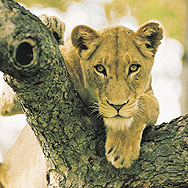
Safari Destinations Guide lets you see two of the most famous reserves in Kenya, the world renown Masai Mara with its superb wildlife and Lake Nakuru, famous for its huge flock of flamingos.
The joy of camping in Kenya is that it allows you to get off the beaten track and experience the wilderness. In the Masai Mara you will stay at a semi-permanent camp where everything is ready when you arrive. At Nakuru you stay at a local hotel because there are no camping facilities in the park.
The Swahili word "safari" means journey and over the years Kenya has become one of the most popular destinations for such a trip. Justifiably so, boasting diverse and beautiful landscapes and the most diverse collection of wild animals on the continent. Situated on Africa’s east coast, Kenya straddles the equator and its eastern coast is lapped by the Indian Ocean. The Rift Valley and central highlands form the backbone of the country, and this is where Kenya’s scenery is at its most spectacular.
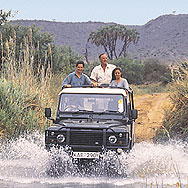
A short safari to the South of Kenya, visiting Amboseli with its excellent views of Kilimanjaro, and Tsavo West National Park. The safari ends in Mombasa from where you transfer to your hotel for a relaxing stay on the shores of the Indian Ocean.
You will stay in some of the best available lodges, situated in beautiful locations to give views out over the Savannah or surrounding countryside. Often you have the luxury of game viewing from the comfort of the lodges outdoor lounges while enjoying a cool drink. All lodges provide en-suite facilities and many have small swimming pools. Comfortable minibuses with guaranteed window seats are used on all trips and they are equipped with large roof hatches to ensure perfect game viewing and photographic conditions.
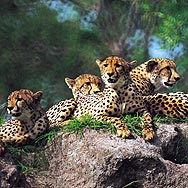
Western Kenya takes in the fertile fringes of Lake Victoria and some prime game parks. The vast, arid north-eastern region is where Kenya is at its wildest and in places almost untouched by the modern world. Kenya’s flora and fauna defies easy description. The vast plains of the south are dotted with flat-topped acacia trees, thorn bushes and the distinctive bottle-shaped Baobab tree. On the rarified slopes of Mt Elgon and Mt Kenya, bamboo forests sprout and even higher up is the bizarre groundsel tree, with its huge cabbage-like flowers, and giant lobelias with long spikes. If you are more into fur and feathers, then head for the teeming game parks. Lions, buffalos, leopards, elephants and rhinos all cavort openly in at least two of the major parks. Endangered animals such as the black rhino are slowly making a comeback and sanctuaries for these creatures can be visited in Tsavo and Lake Nakuru national parks.
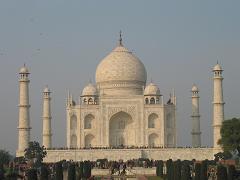
The subcontinent of India lies in southern Asia, between Pakistan, China and Nepal. To the north it is bordered by the world's highest mountain chain and the south is covered in tropical rain forests and bordered by beautiful beaches. India is a country of immense diversity - culturally as well as geographically. A huge number of religions, traditions and languages make up this vibrant and chaotic country.
Modern India is a place where contradiction and contrast co-exist. India has embraced technology whilst simultaneously cherishing the tested and traditional. Farmers can be found using ancient methods to earn their living, whilst minutes away state-of-the-art factories produce gleaming cutting-edge gadgets that are sold across the world. And it is this industrial development that has put India well and truly on the international map. But it's also a country where many things haven't changed for hundreds of years and certain parts seem strangely removed from the twenty-first century.
Two of the most popular visitor destinations in India are Kerala and Goa.
Kerala is located on the coast of southern India. It is renowned for its lush vegetation, tranquil beaches and breathtaking mountains. Kerala offers a rich and alluring culture that embraces many different religions and influences. This is an excellent destination for experiencing the real India in stunningly beautiful surroundings.
Goa, in comparison, has a more European feel. The invasion of the Portuguese in 1510 brought with it a Mediterranean influence that can still be seen today. Like Karala, the beaches and scenery are description-defyingly beautiful. Goa has everything the holidaymaker could want, with a healthy sprinkling of Indian exoticism and mystery.
Please note
In India the monsoon season generally runs from May-October. Please refer to the Useful Information section of this guide for weather patterns and travel advice.
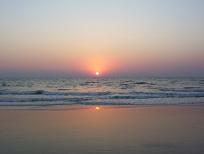
Both Goa and Kerala have abundant beaches. You can choose from developed beaches, with their facilities, restaurants and high level of maintenance, or deserted stretches of sandy paradise.
Baga Beach A small fishing seashore lined with thickets of shady palm trees that provides a stunning view against the playful sea waves
Anjuna Beach , known for its infamous full moon parties, lies 8km west of Mapusa. Since the 1970s, it has been on the top favourites list of tourists a hippy hangout. indian holidays.
Bambolim Beach , is small and clean and gloriously unspoilt.
Thirumullavaram Beach, Kollam This secluded beach is a beautiful picnic centre and has frequent bus connections to the town.
Tax free zones, modern lifestyle, amazing real estate and multicultural environ makes Dubai an alluring abode for expatriates and local alike. Dubai offers unlimited opportunities and a sense of security not seen anywhere else in the world. Gowealthy.com offers an array of interesting and detailed articles on living and working in Dubai from Real estate to the culture and the life style. Read and find out more About Dubai.








